Myanmar’s Deep South
Kawthoung
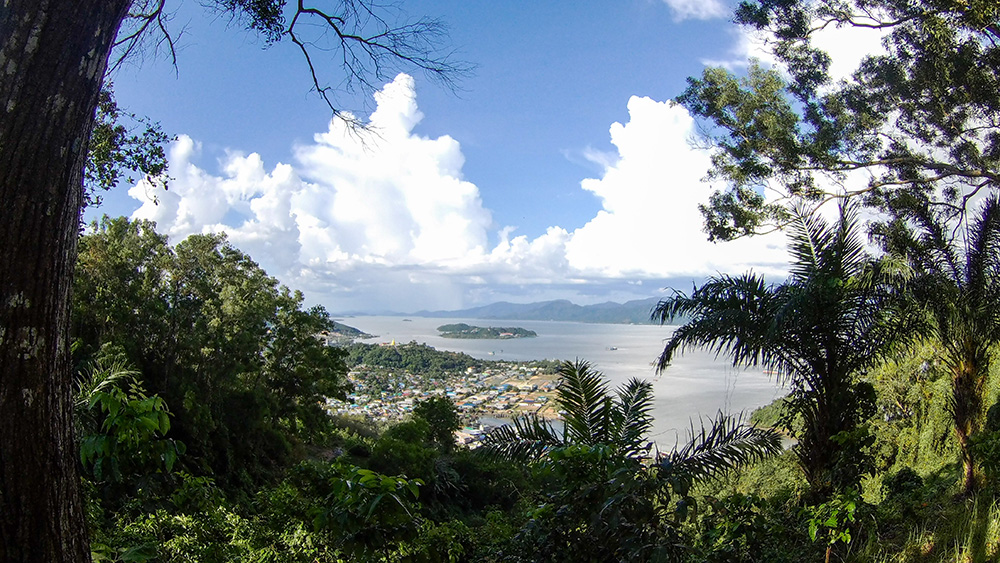
Kawthoung is the city located at the southernmost tip of Myanmar and a quick boat across the water from Thailand’s Ranong. It bustles with trade and tourism and crowds come from Thailand and beyond every day to get a taste of the nearby Myeik Archipelago. The leafy park above the coast road at Victoria Point features a giant statue of King Bayintnaung wielding his sword towards Thailand. This is also a great spot for views across the busy harbor below.
Myeik Archipelago
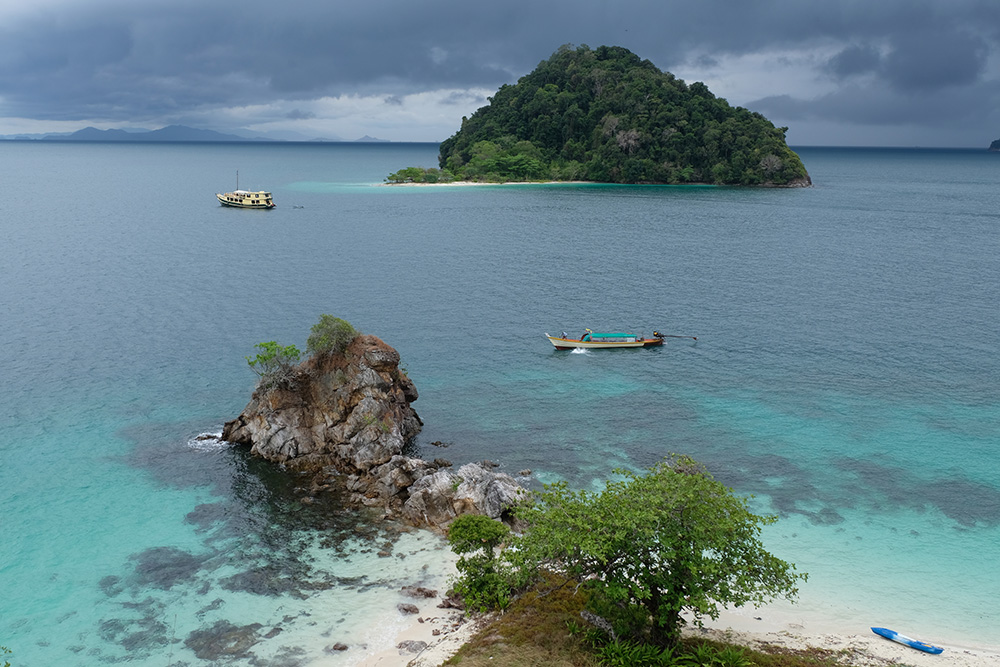
Touted as one of the world’s last untouched island paradises, the 800 islands of Myeik were largely cut off to the public until just a few years ago. With development plans in the works for some of the islands, now is the time to take a multi-day cruise through the more remote parts of the archipelago and bask in the tranquility of deserted white-sand beaches and dense virgin jungle. The archipelago is said to have some of the best dive sites in the world and you may spot a family of the sea nomad ethnic group, the Moken (called Salone in Burmese).
Myeik
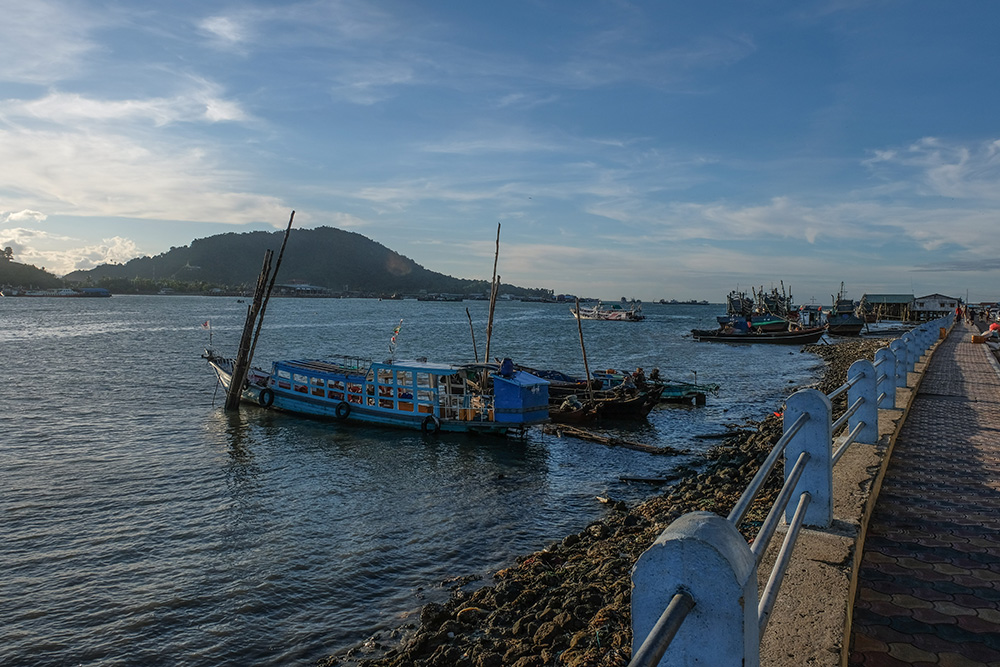
The city of Myeik has been an important port city for centuries, with sea traders from across the globe docking in the harbor. The main streets have well-preserved European and oriental architecture and several mighty mansions built by wealthy traders are still in use. The fish processing part of town is interesting and worth a visit if you can hack the smell, while the bustling and colorful ship-building yard is a must-see.
Dawei
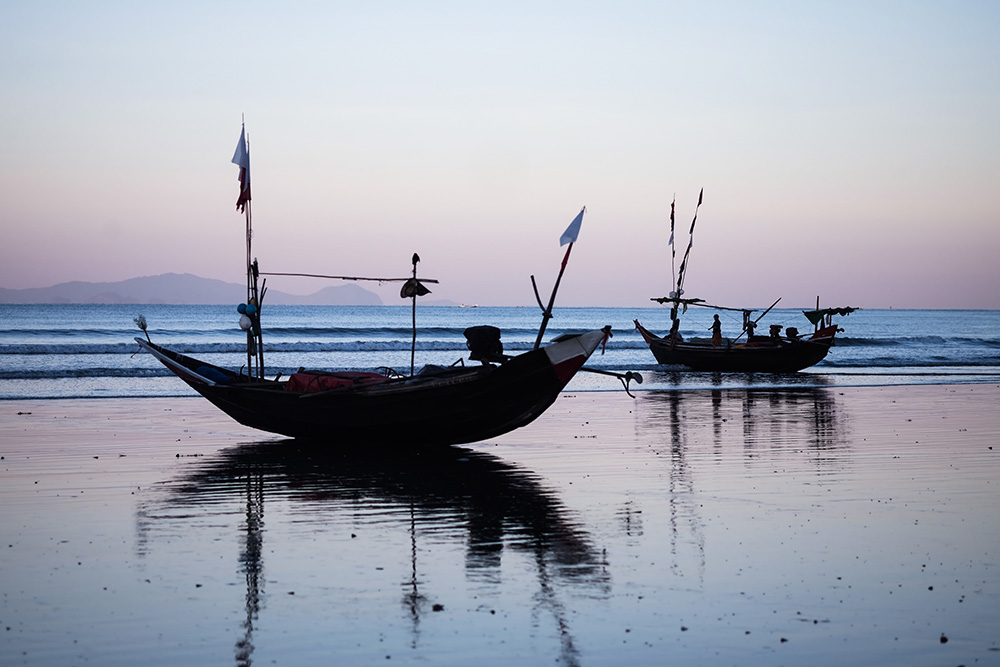
The draw to Dawei usually leads travelers beyond the city to the beaches at Maungmagan and further along the coast. Maungmagan has wooden beach hut restaurants where you can order coconut water and delicious seafood. Walking south along the beach brings you to a picturesque fishing village while a motorbike trip north leads to deserted, pristine white sand beaches, like Nabule which is studded with dramatic boulders.
Mawlamyine
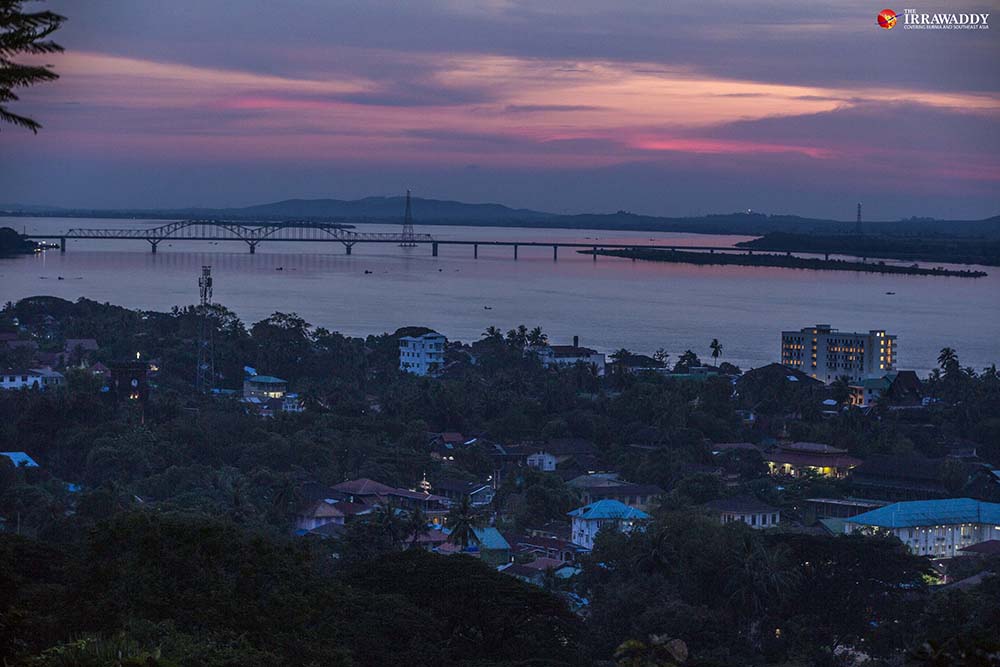
The sleepy, peaceful Mawlamyine located at the mouth of Thanlwin River is actually Myanmar’s fourth largest city. There are a number of beautiful pagodas to visit, like Mahamyatmuni Pagoda which has a great view across the town and down to the river. You can go back in time visiting colonial-era churches and other well-preserved architecture or see a local craft workshop on Bilu (Ogre) Island across the river. A short trip outside Mawlamyine lies Win Sein Taw Ya, said to be the longest reclining Buddha image in the world, which you can actually walk inside and see a series of life-size scenes from the Buddha’s life.
Hpa-an
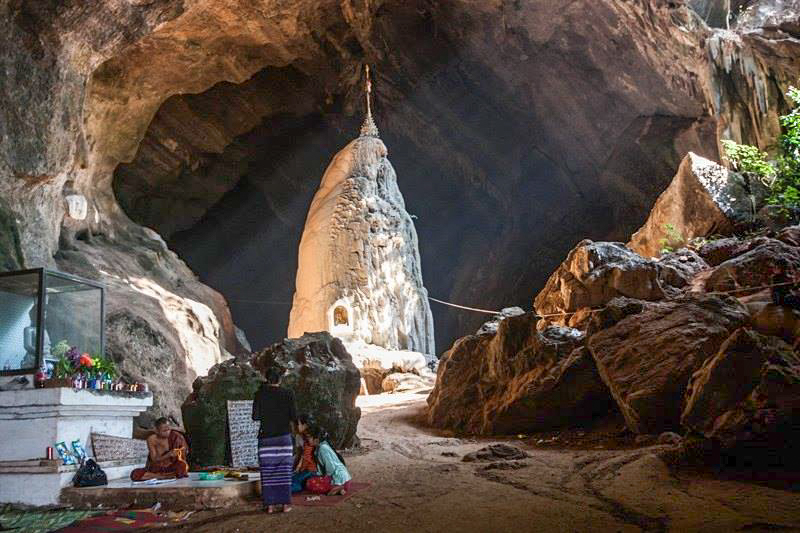
The wonders of Hpa-an, the capital of Karen State, lie outside the town among the craggy limestone outcrops inside which you’ll find caves both small and mighty. The huge Saddang Cave has religious monuments to the front and beautiful mineral formations to the back. Other good caves to visit include Kawkathaung and Kawgoon caves and at sunset, you can watch millions of bats swarm out of the “Bat Cave” by the river. Mount Papu is an easy trek while Mount Zwekabin (732 meters) is much more challenging yet rewarding with fantastic views from the pagoda at the top.
Golden Rock
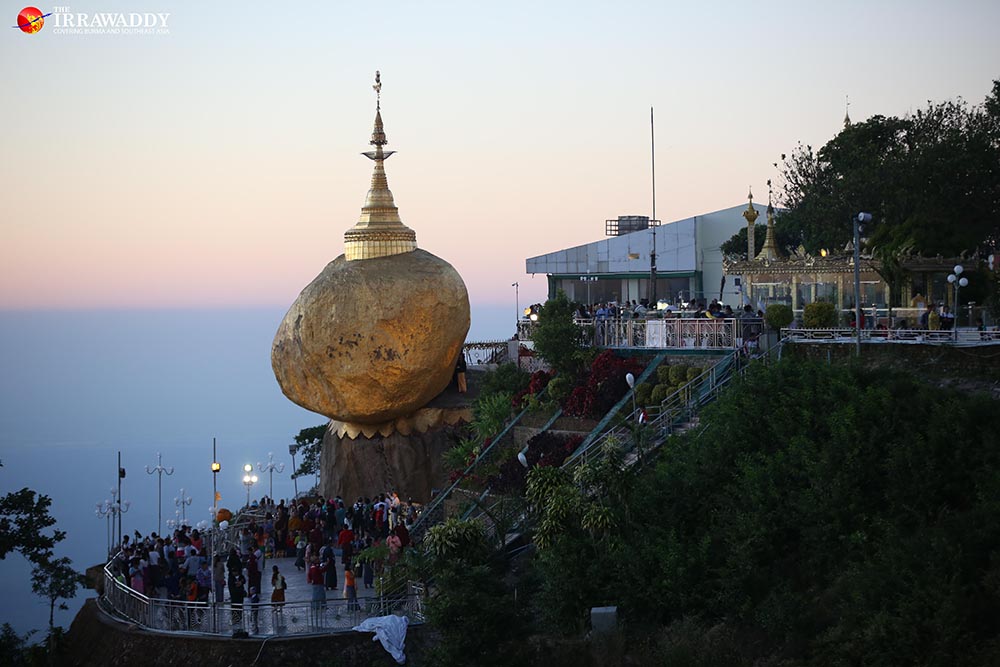
The famous gold leaf-covered rock with stupa on top teeters seemingly impossibly on the edge of a rocky mountain and is one of the most religiously important sites in Myanmar making it the destination for hundreds of thousands of Buddhist pilgrims every year. You can take a truck to the drop-off point a 45-minute walk from the rock itself, or choose to walk the pilgrim route from the base which takes around six hours. Back in Kin Pun, the base town serving visitors to Golden Rock, the beautiful Saung Hlaing Gyi waterfall is just a taxi or motorbike drive away and has a great swimming area and waterside shops where you can sit in the shade and order drinks and snacks.
South Central Myanmar
Chaung Tha
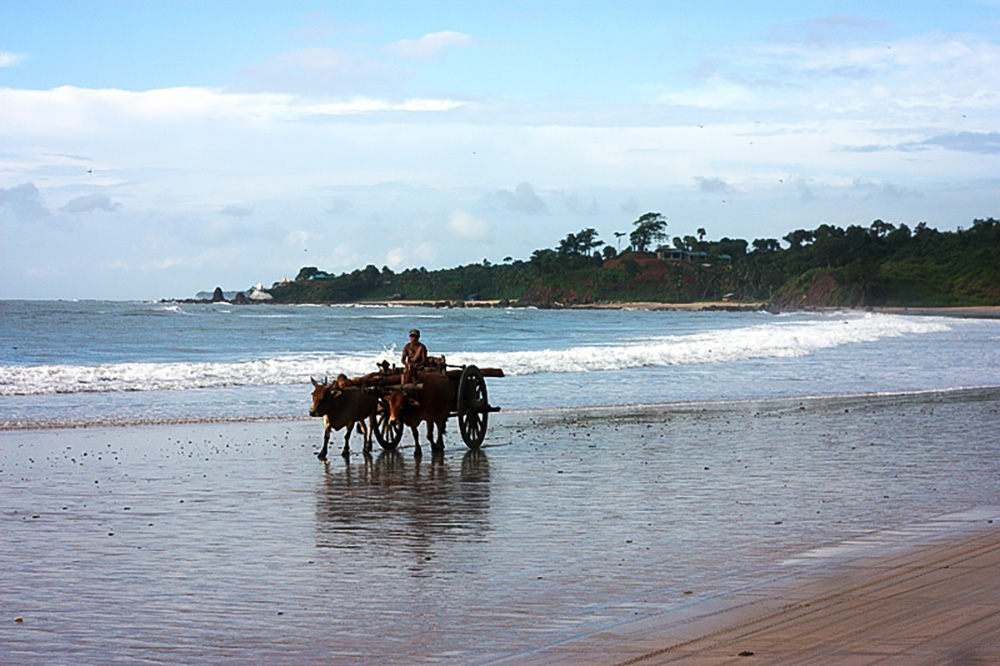
This is the most casual and fun of Myanmar’s beach towns. It’s popular with families and groups of friends from Yangon and can be busy around holidays and weekends. After swimming and water activities in the sea, you might see camp fires, and even impromptu karaoke sessions on the beach in the evenings.
Ngwesaung
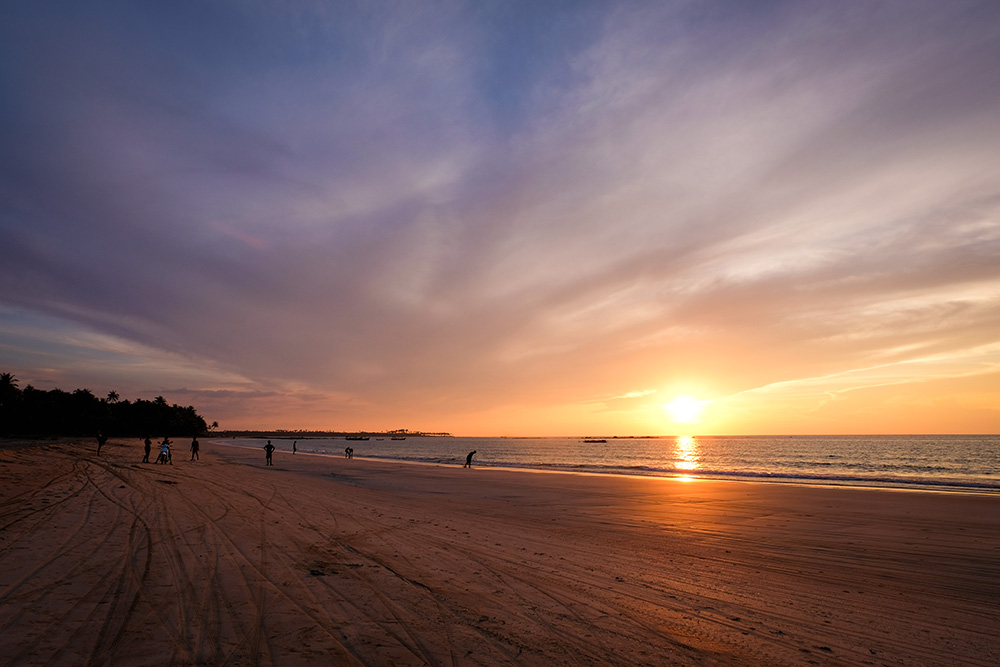
Ngwesaung is a little more upscale than neighboring Chaung Tha and has a reputation for being a peaceful and clean beach with clear waters not yet mobbed by city folk. Close to the village you’ll find vendors selling seafood and offering water sport equipment. The further along the beach you walk from the village, the easier it is to find your own private slice of beach heaven.
Gawyangyi
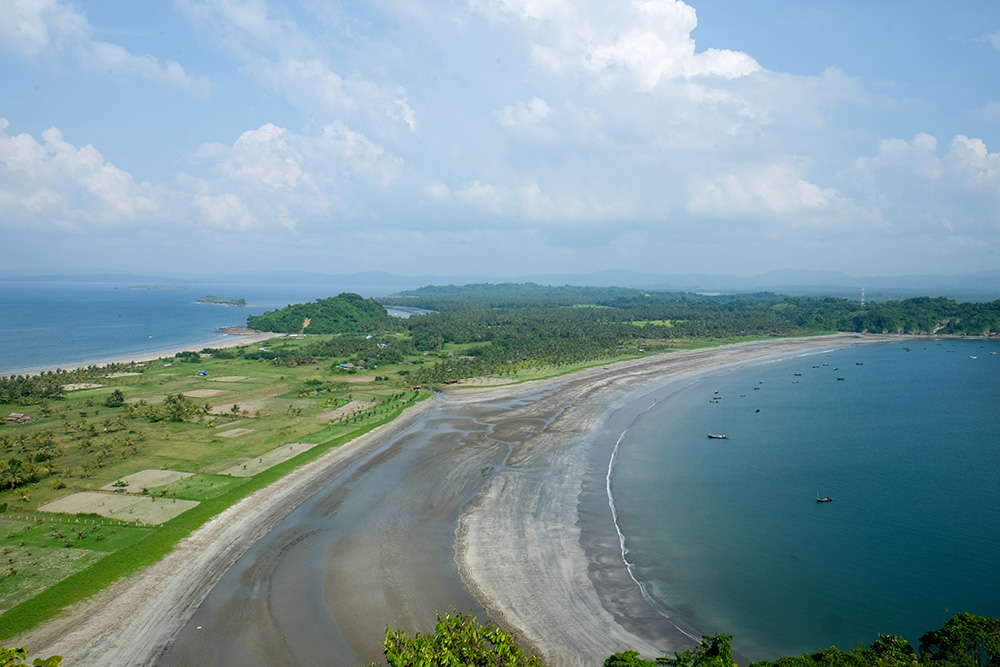
This is a new beach destination for Myanmar. It was little more than a deserted stretch of beach and a white-sand bay until a few years ago but now a few low-key accommodation and dining options have cropped up and the guesthouses can arrange water activities to suit your level of adventurousness. The road to Gawyangyi is still very rough and deters all but the most determined beach-goers, making it a rewardingly quiet and romantic getaway.
Yangon
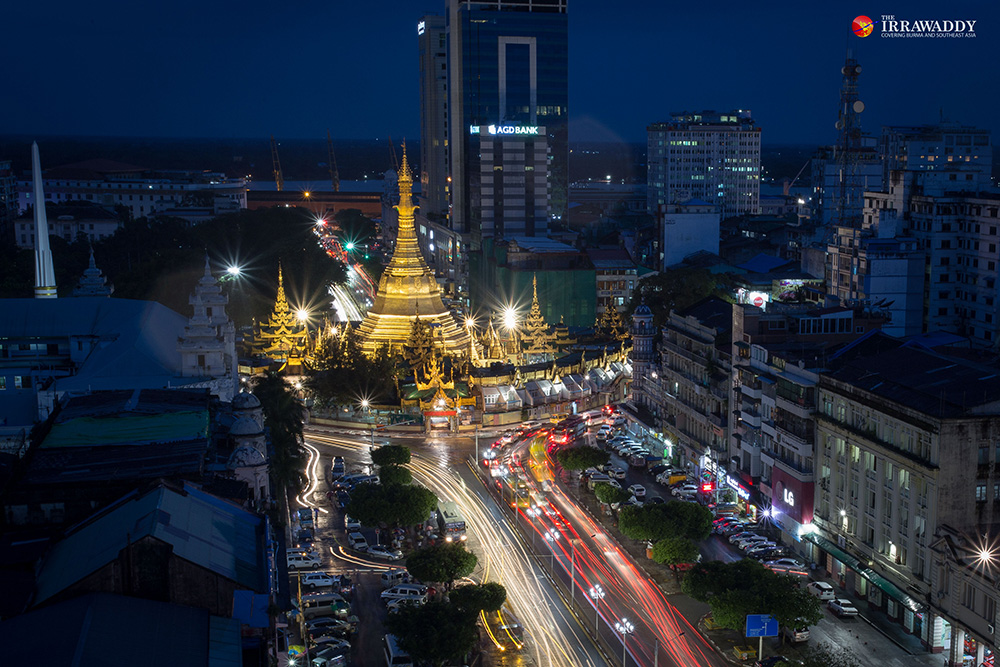
The commercial capital Yangon is a booming city and the center of modern Myanmar. Though sometimes hot and crowded, this dynamic, diverse city also has the best hotels, restaurants, galleries and cultural events in the country. And the glittering Shwedagon Pagoda looks out over it all.
Twante
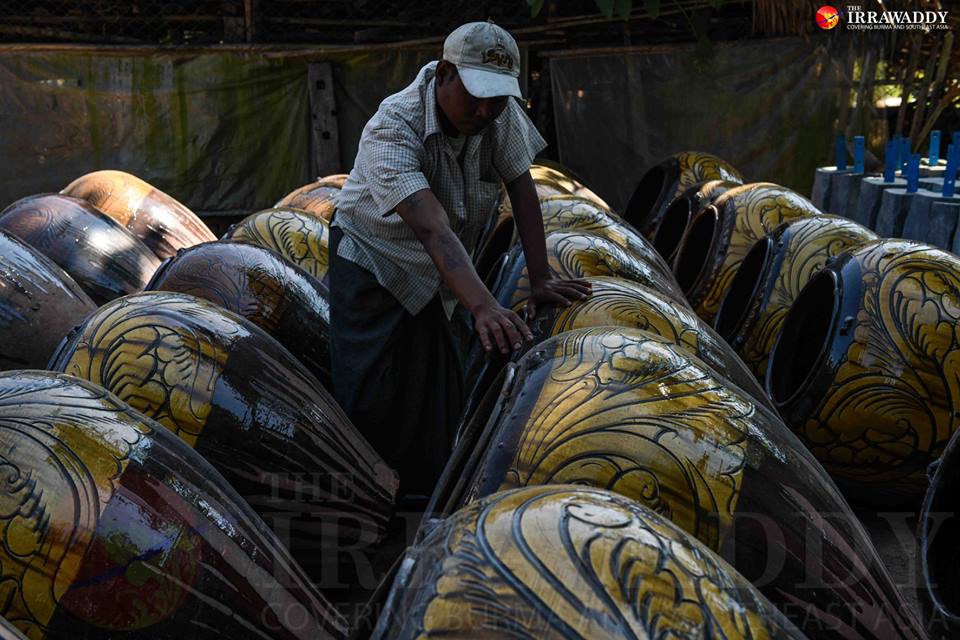
Though just a short trip from the hubbub of downtown Yangon, Twante feels like a million miles away. This town is famous as a center of pottery and workshops take up entire quarters here. Inside the workshops you can witness the entirely non-mechanized process from start to finish. There’s also a snake temple on a lake outside the town and a pagoda complex with a thousand Buddha statues to wander through.
Bago
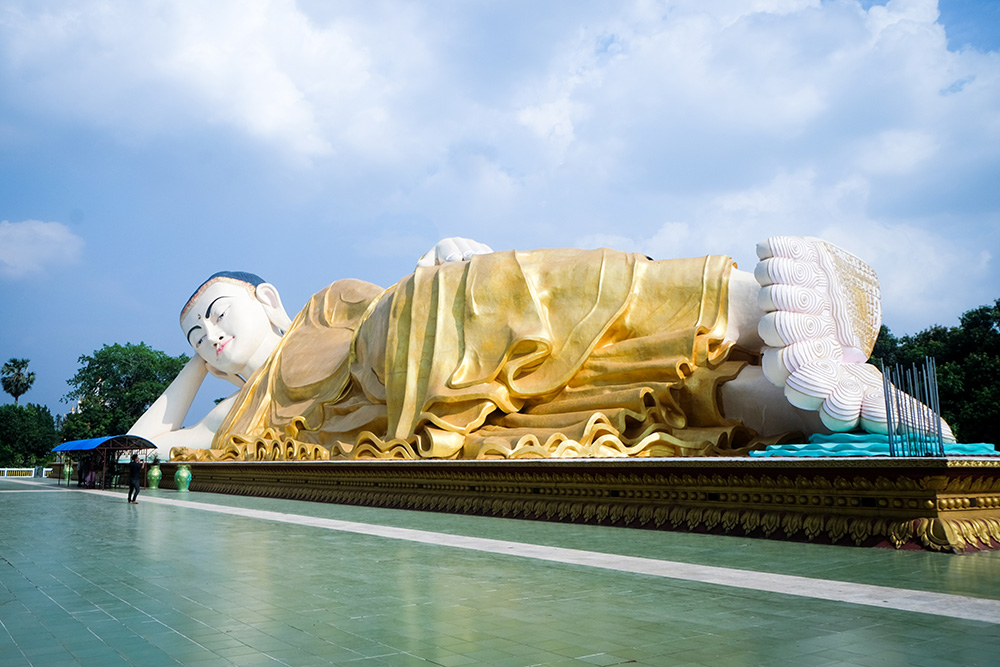
Bago, often called by its colonial-era name Pegu, is all about the huge and beautiful religious landmarks which draw large numbers of Buddhist travelers from near and far. The mighty Shwemawdaw Pagoda is some 46 meters taller than Yangon’s Shwedagon and there are two huge reclining Buddha images. At Shwethalyaung, the indoor reclining Buddha, you’ll see a huge wall of names of donors from all over the world. Everything in the town can easily be reached by tuk tuk or bicycle which can be hired at most hotels.
Taungoo and Thandaunggyi
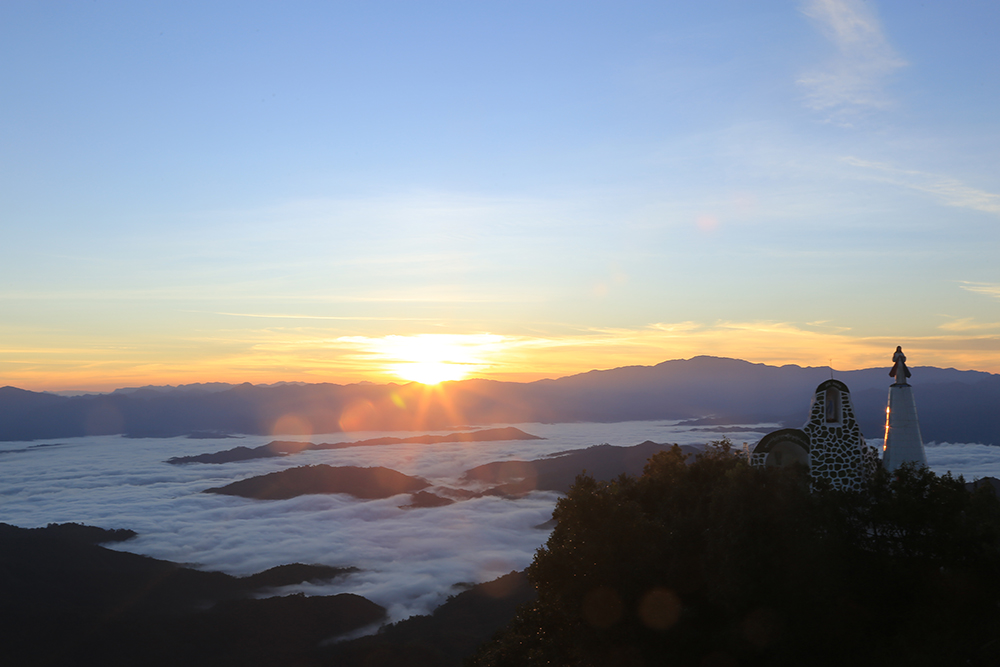
Taungoo, the town serving visitors to Thandaunggyi, is easy to get to from Yangon and so is growing in popularity. Once the capital of a huge kingdom stretching far beyond Myanmar’s modern borders, Taungoo is now a sleepy town surrounded by rice paddies and with some crumbling colonial mansions which have been dramatically taken over by nature. The peaks of Thandaunggyi and the nearby Naw Bu Baw prayer hill, which actually lie across the border with Karen State, are the main attractions for visitors to the area.
Pyay
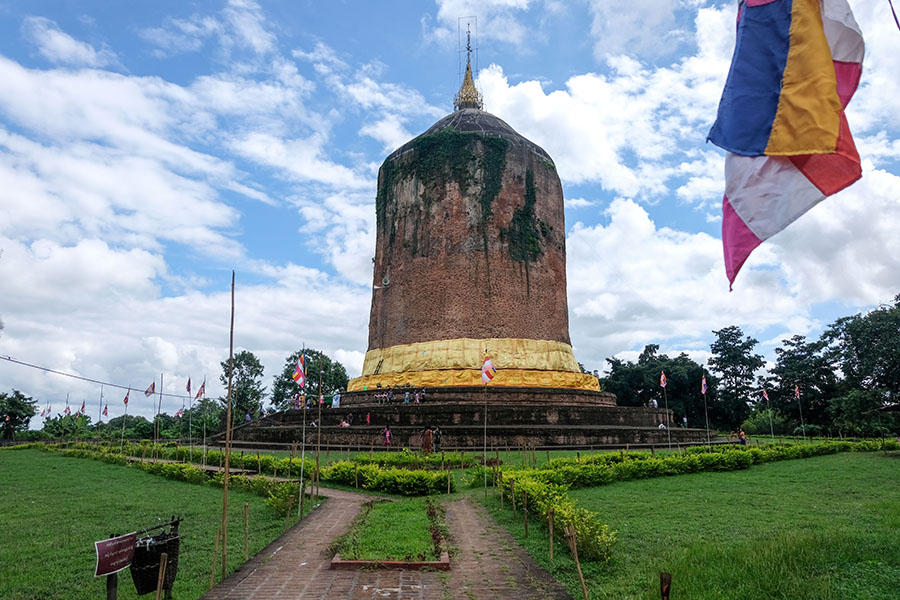
The remains of the ancient city of Sri Ksetra, once a stronghold of the mighty Pyu Kingdom, today makes up part of Myanmar’s only UNESCO World Heritage Site lies in the countryside surrounding Pyay. The temples, hulking and simple in design, are well preserved and unique to other collections of temples you’ll find in Myanmar. A short trip from the city of Pyay and a boat ride along the Irrawaddy River, Akauk Taung is a point along the banks where an impressive series of Buddha images were carved into the mountainside in the 19th century.
Central Myanmar
Naypyitaw
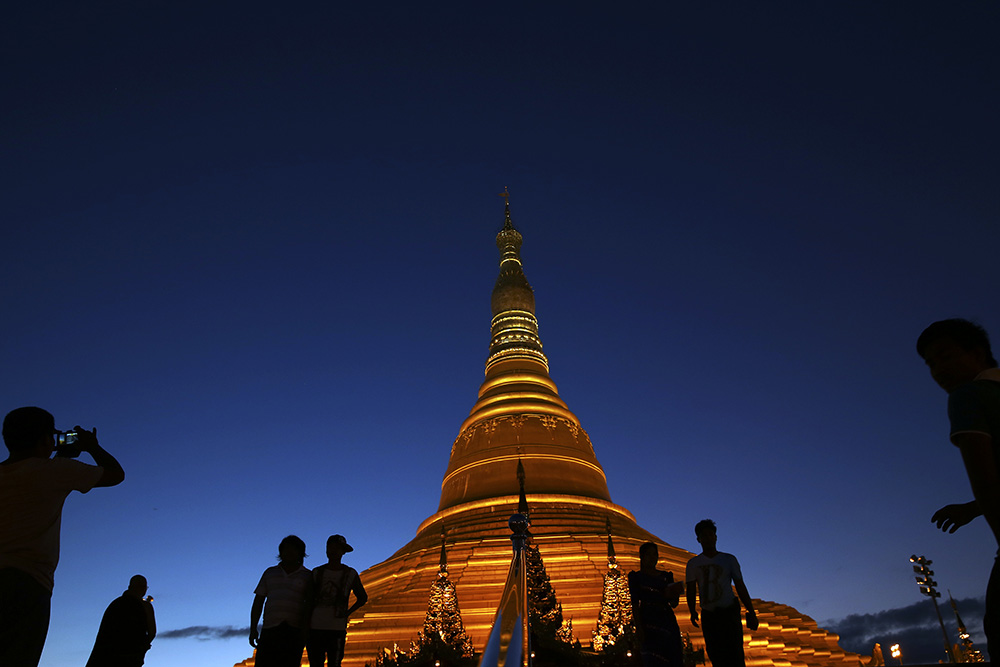
Naypyitaw, the legendary purpose-built administrative capital of Myanmar, was established in 2005. Known for its sweeping empty highways and elaborate, little-used roundabouts, the city also has a military museum, a zoo and safari park, two golf courses and many five-star hotels. The sprawling parliament buildings the Uppatasanti Pagoda are the city’s major landmarks, the pagoda modelled on Yangon’s Shwedagon but measuring 30 centimeters shorter.
Bagan
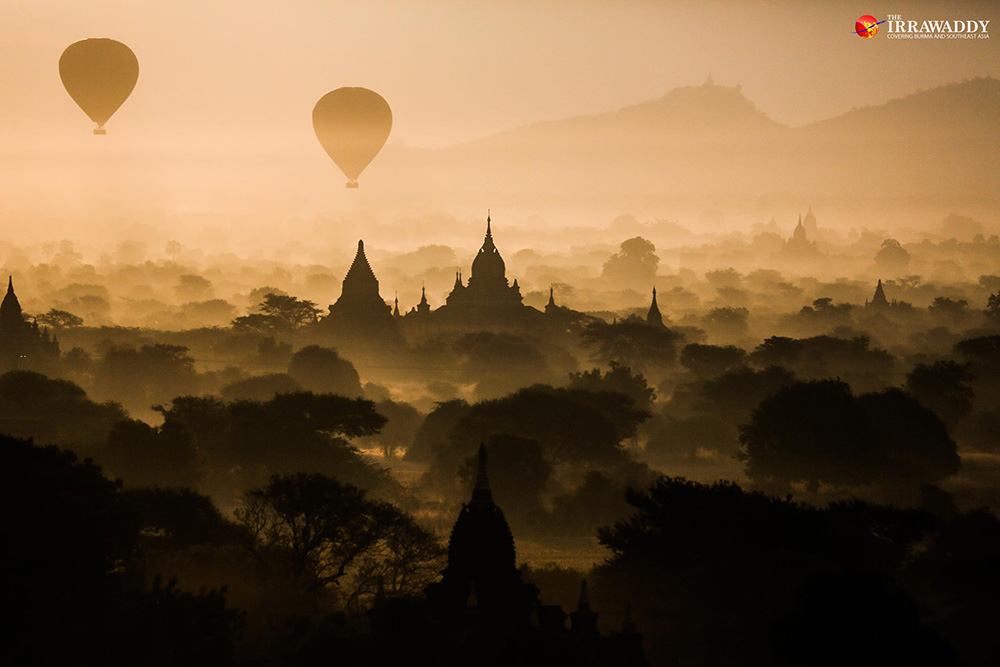
Myanmar’s most famous destination deserves every bit of recognition it gets. There are fewer scenes in the world more beautiful than sunrise, or sunset, over the 2,200 Buddhist temples built between the 11th and 13th centuries. You can spend many days exploring Bagan’s plane of temples because each has a unique design and history. Some have ancient paintings on their walls, some are said to be haunted and some have secret underground tunnels.
Mount Popa
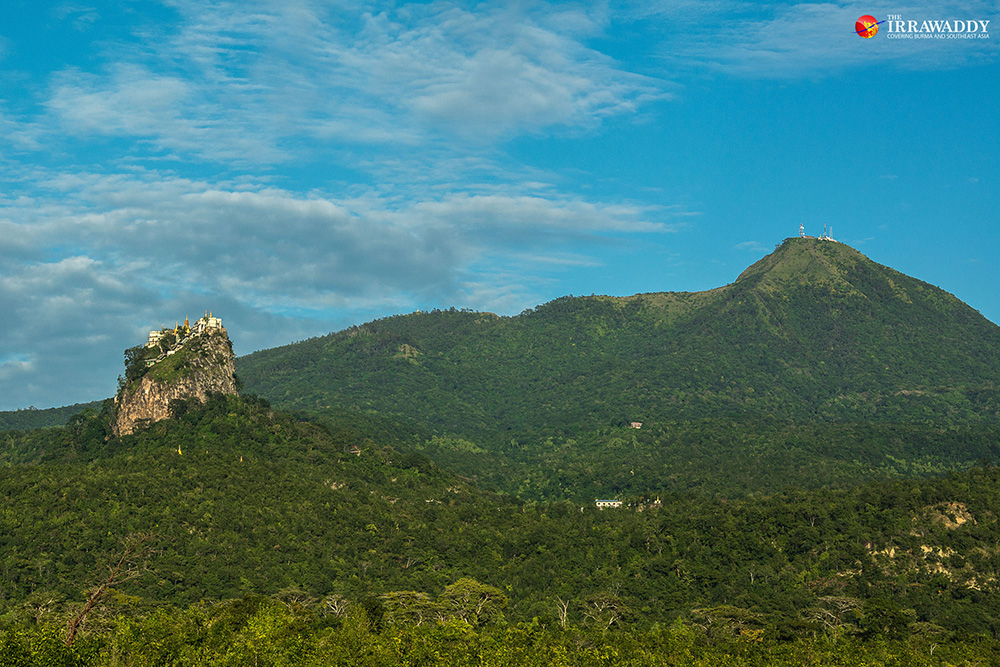
A temple built on top of an extinct volcano, Mount Popa stands out in stark contrast to the rest of the landscape of Myanmar’s dry zone. The auspicious mountain is usually visited as part of a day trip from Bagan and is home to no less than 37 spirits drawing groups of pilgrims to come here every day and climb the 777 steps to the top.
Monywa
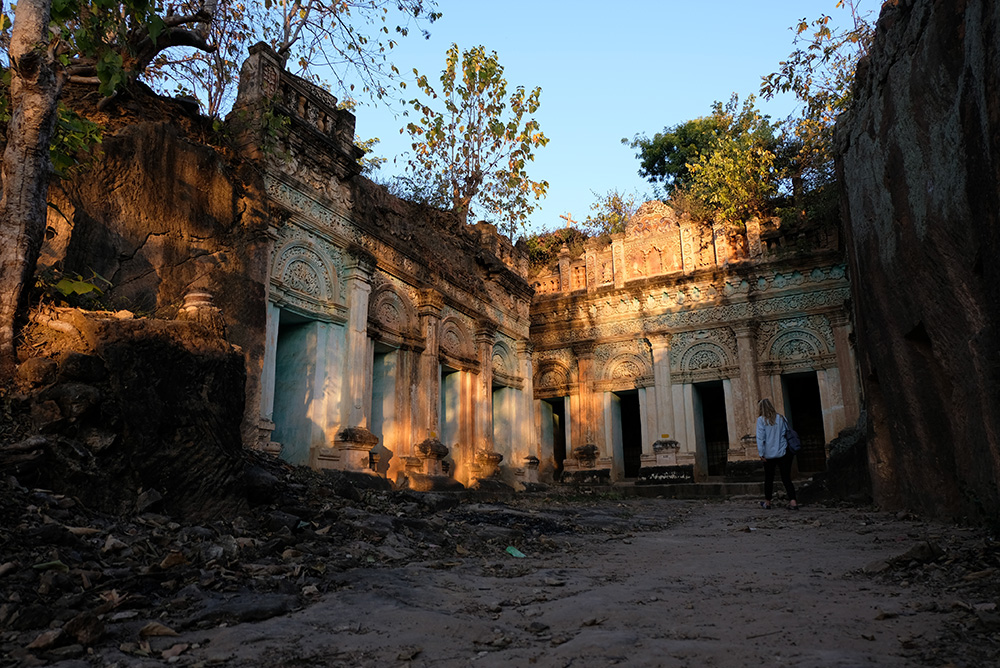
This little-visited destination is a three-hour drive from Mandalay and has the country’s most enormous Buddhist monuments, including the third-tallest standing Buddha image in the world, the second-longest reclining Buddha image in the world and a very large seated Buddha image under construction. Nearby Po Win Daung is a fascinating network of caves with temples and shrines carved into the mountain and even some ancient paintings.
Mandalay
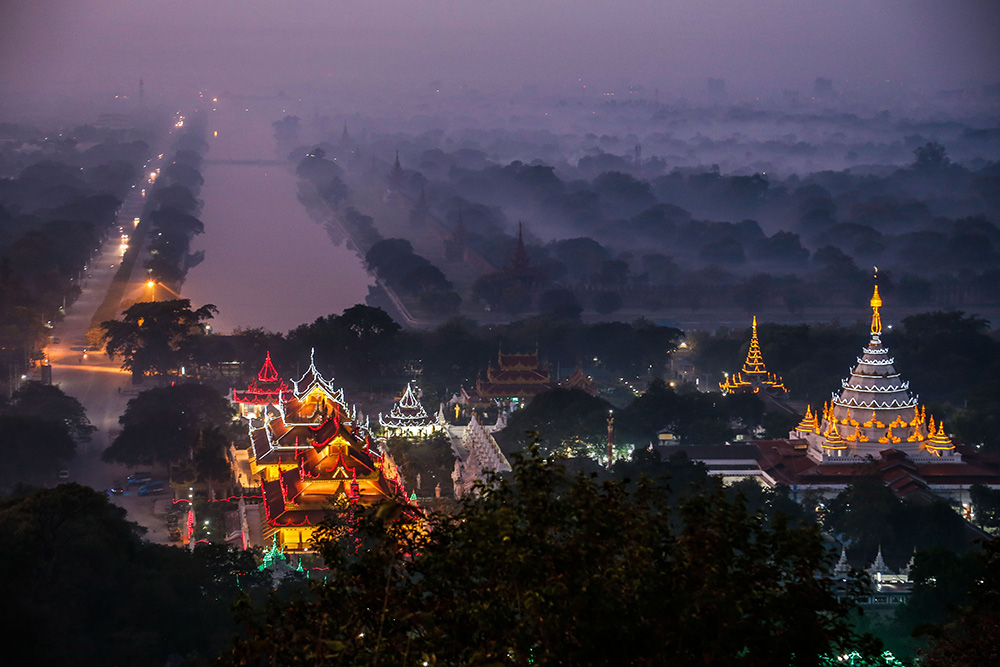
Often referred to as Myanmar’s cultural capital, Mandalay has a rich royal history and there are several well-preserved teak monasteries. Kuthodaw and Mahamuni are beautiful pagoda complexes to visit and watching the sun set from atop Mandalay Hill is a wonderful experience.
Inwa
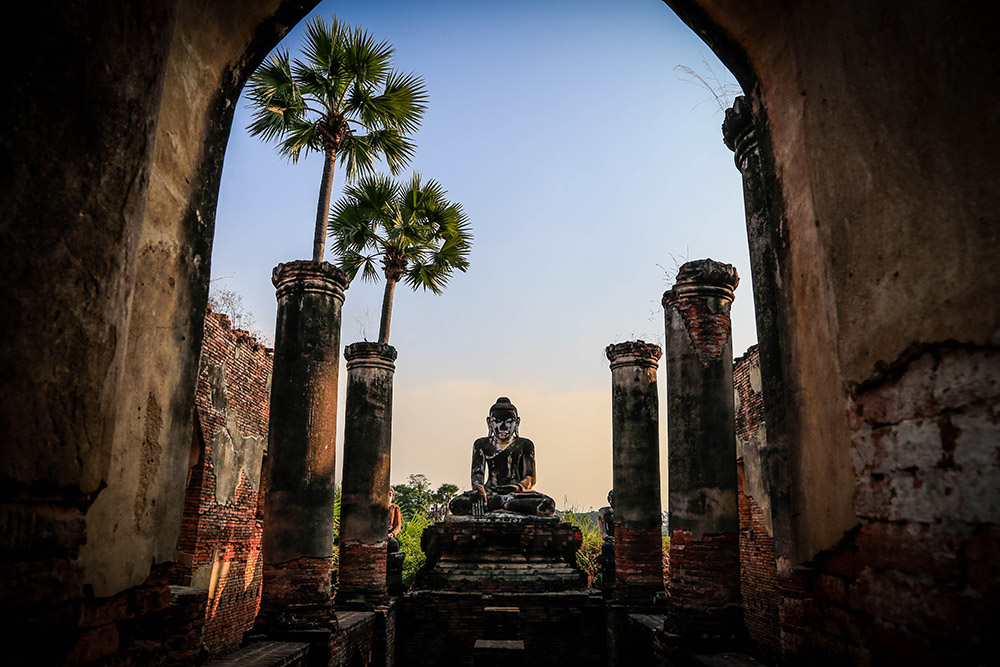
This is an enchanting place to visit just outside Mandalay. Now occupied by villagers living a simple life, between the 14th and 19th centuries it was the seat of a mighty and powerful kingdom and a royal city which was brought down by a series of earthquakes. Among the rice paddies and goat herds, you’ll find the ruins of the royal palace and moat, a monastery, pagoda and a watchtower and other historic structures, some proudly displayed and some hidden in the high grass.
Mingun
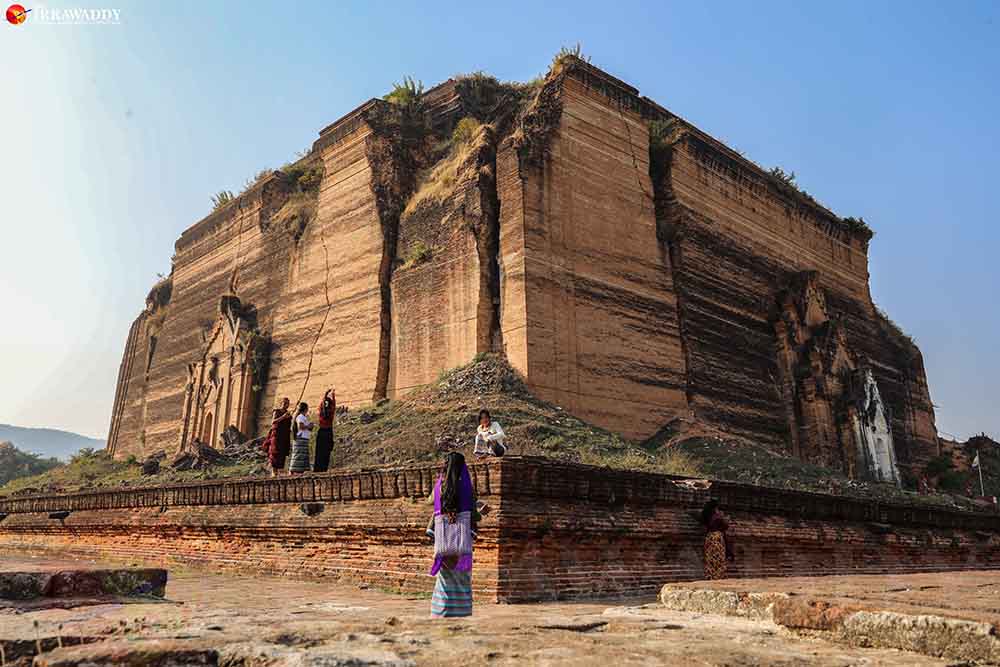
Across the Irrawaddy River to the northeast of Mandalay is Mingun. Spend a few hours wandering around the area and admiring the colossal Mingun Pahtodawgyi Pagoda which was split down the middle by an earthquake; the giant Mingun Bell said to be the second heaviest operating bell in the world; and the very pretty, all-white Mya Thein Tan Pagoda. Afterwards, enjoy lunch in a café by the river. Mingun can be accessed by boat or taxi from Mandalay.
Pyin Oo Lwin
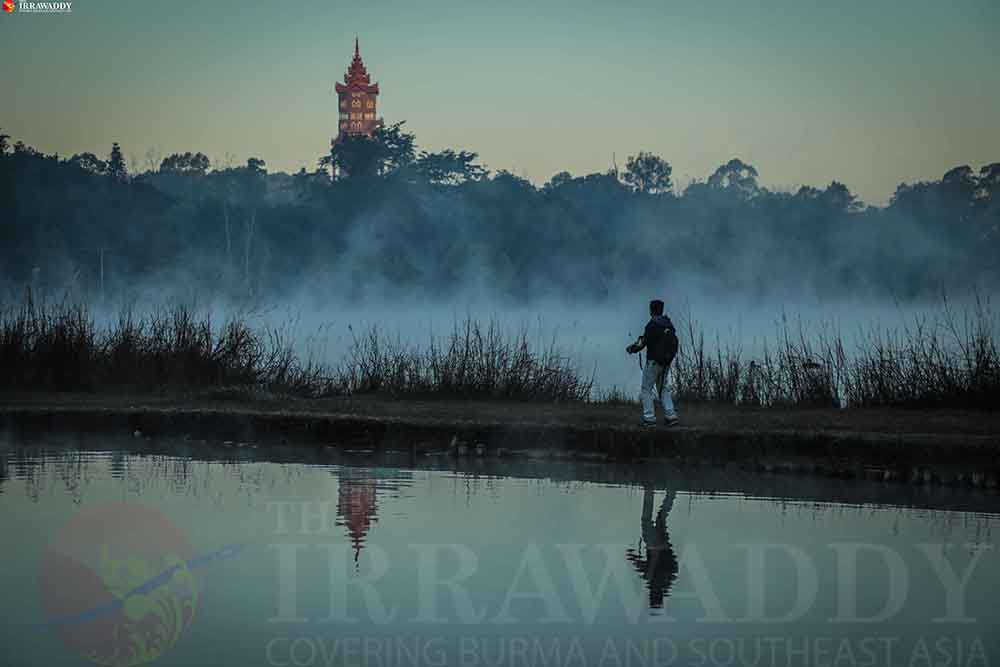
Often called by its colonial name, Maymyo, Pyin Oo Lwin is a great place to visit during Myanmar’s hot summers because the climate is decidedly cooler all year round. A main feature of the town is the large and picturesque Kandawgyi National Botanical Gardens which is over a century old but the butterfly and fossils museums on the perimeter of the gardens are must-visits. Much colonial architecture remains well preserved here and there are a few waterfalls outside the town which are good for swimming—if the weather’s not too cold. Don’t forget to try the local sweet wines made from strawberries, grapes and damson fruit while you’re in town.
Gohteik Viaduct
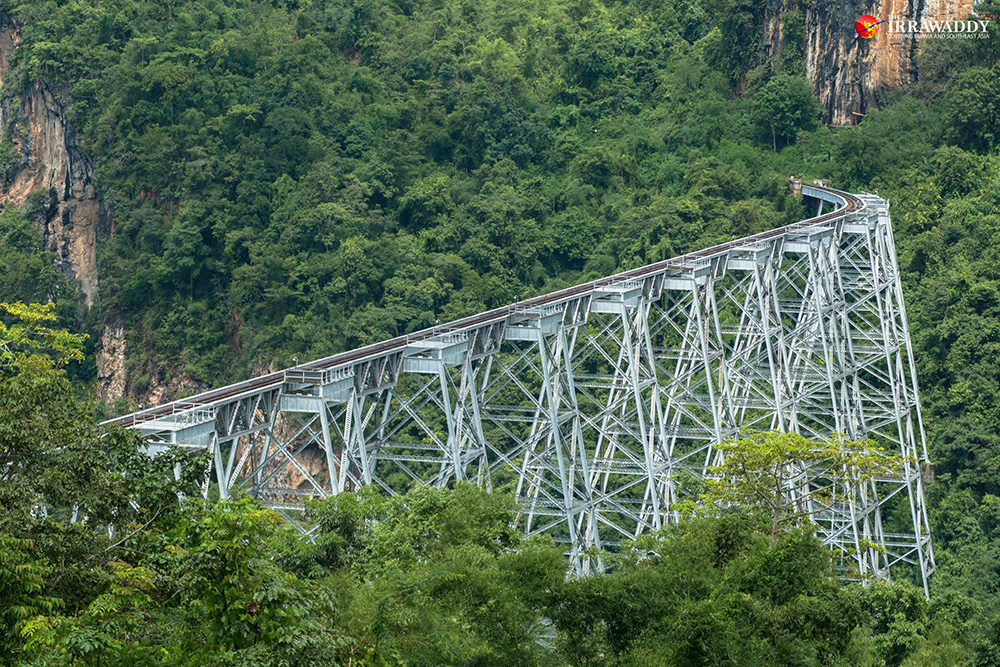
A train journey across this teetering steel bridge is sure to be one of the most memorable experiences of any trip in Myanmar. Connecting Pyin Oo Lwin in Mandalay Region to Hsipaw in northern Shan, the train slows as it approaches the deep gorge with the 119-year-old steel frame soaring above it. As the train slowly clunks across, look out the window to see the huge drop below, the gorge filled with dwarfed trees and rock cliff faces.
Mogok
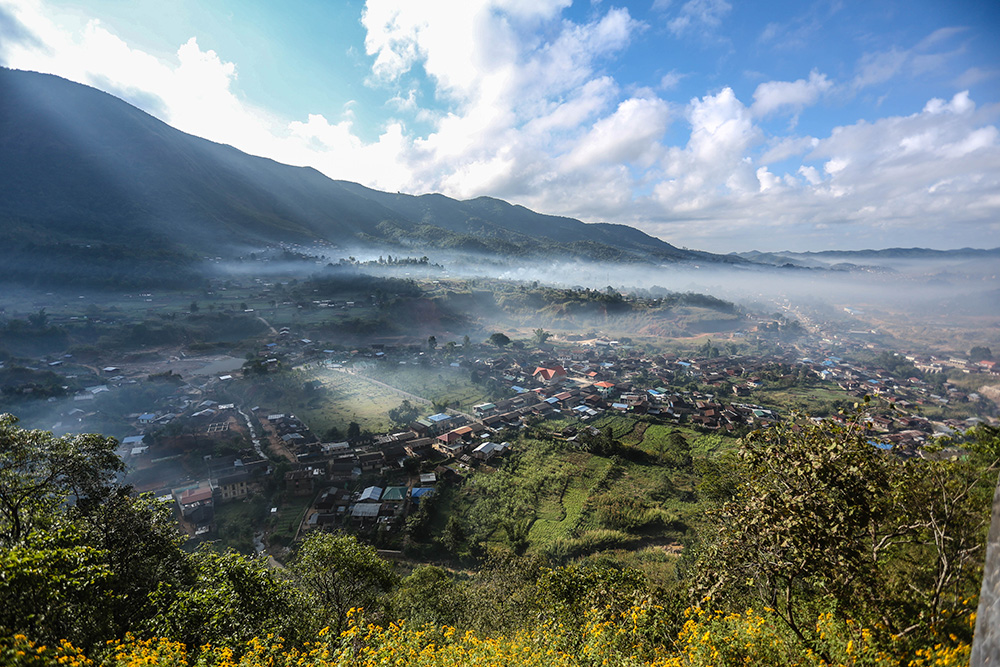
Most of the world’s highest quality rubies are sourced from the mountains at Mogok. This affluent and well-developed town is a six-hour drive north of Mandalay and has a cool climate. Gems markets are interesting places to observe the trade, and perhaps make a purchase, and there are lots of lookout points with great views over the misty valley. Be sure to try the local dishes at the night market by the lake.
Western Myanmar
Ngapali
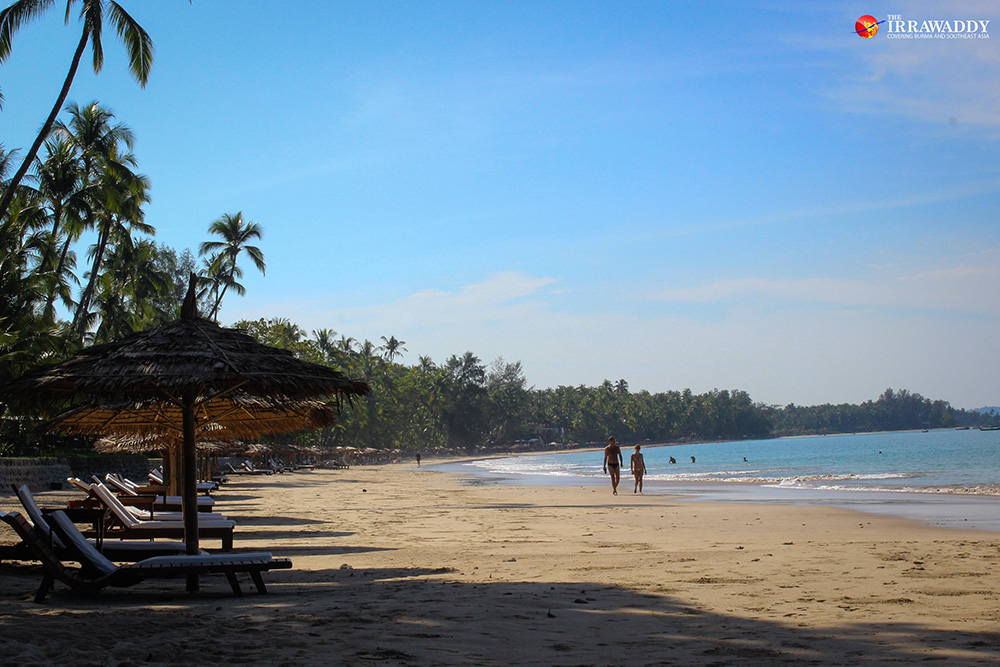
Usually accessed by flight from Yangon and with many high-end hotels, Ngapali is known as a more upscale seaside getaway. Sunsets can be especially spectacular from this beach which has been dubbed one of Asia’s best. Though you’re likely to spend most of your time relaxing on the white-sand beaches or under the shade of coconut trees dining on fantastic seafood, visitors can also go snorkeling, diving or take a boat trip.
Sittwe
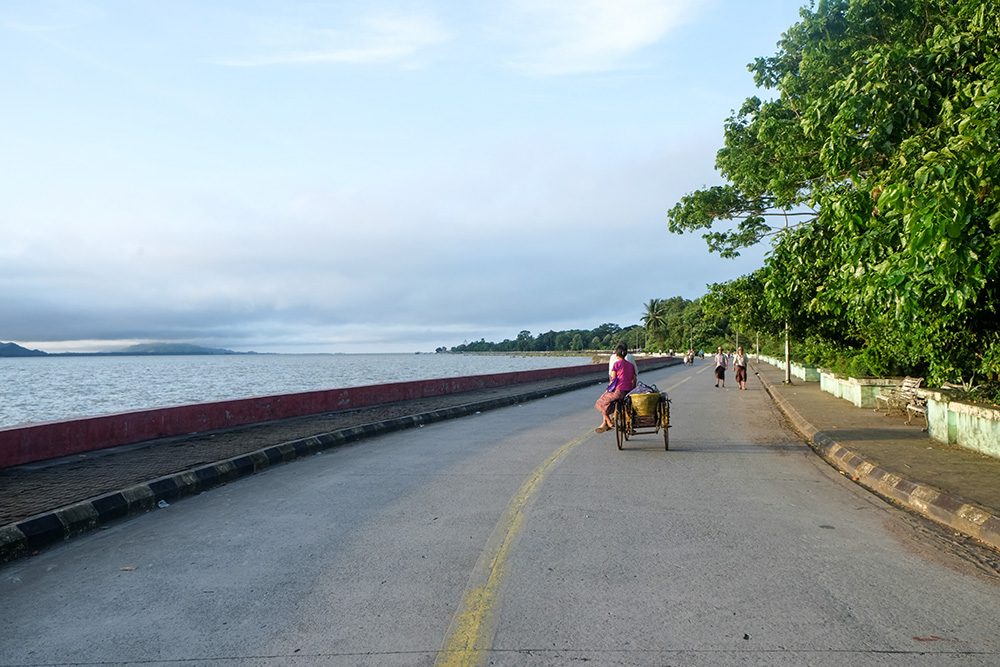
Usually only visited on the way to Mrauk-U, Sittwe is the capital of Rakhine State and the center of Arakanese culture. Arakanese food—all fresh green chilies and juicy seafood—is loved far beyond the state and is a must-try while you’re in town. In the morning, check out the bustling central market and in the evening join locals walking along the beach at sunset.
Mrauk-U
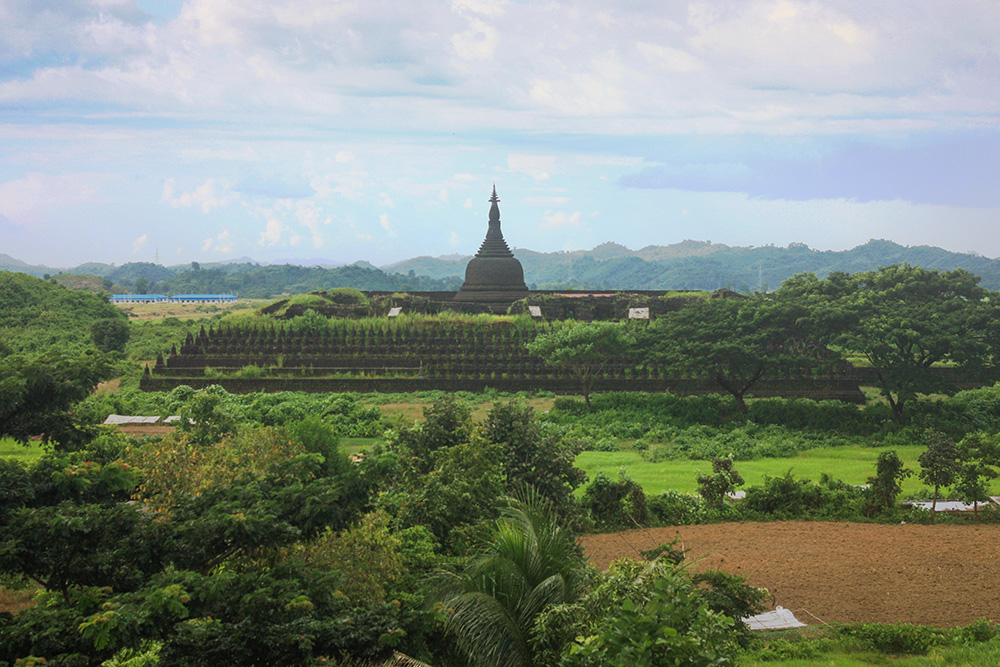
Mrauk-U is currently prone to outbreaks of conflict between Myanmar’s military and the Arakan Army and visitors should not travel to the area until it is officially declared safe.
Arguably one of the most special places in Myanmar, Mrauk-U was once the capital of the Arakan Kingdom which was a regionally powerful realm between the 15th and 18th centuries which is when most of the temples were built. Though some shoddy conservation work has been carried out, inside the most famous Shitthaung Pagoda is a series of tunnels lined with thousands of colorful carvings of religious and historical Arakan figures. Unlike Bagan, life in the vicinity of the temples remains as it always has been with farmers grazing their herds and kids fishing in the streams right next to the ancient structures.
Mount Victoria and Mindat/Kanpetlet
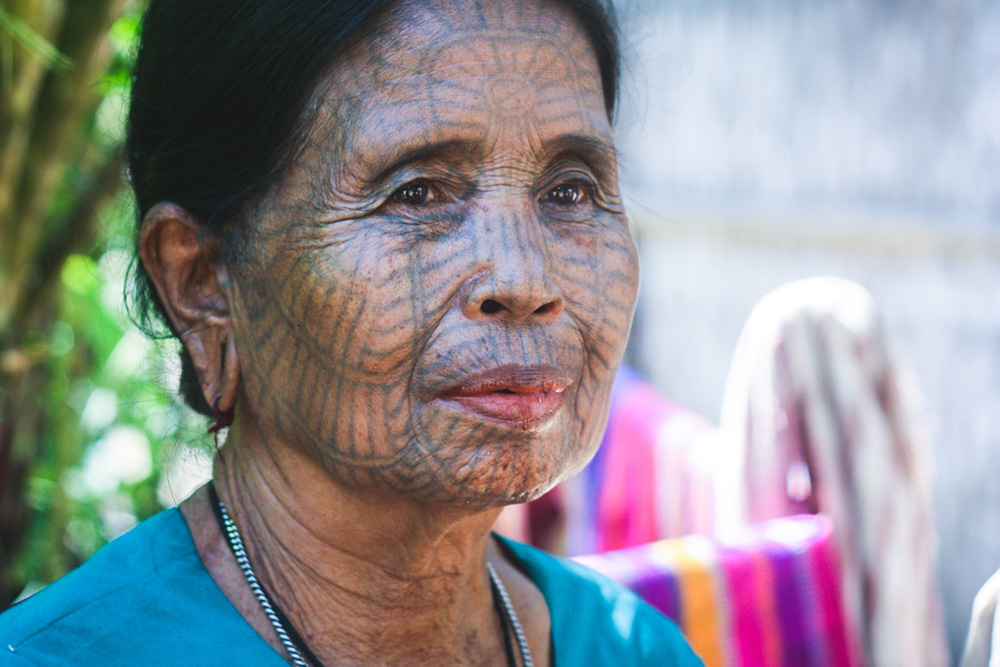
In southern Chin State, Mount Victoria is rising in popularity as an easygoing trekking destination set in a beautiful national park with wild orchids, cherry blossoms and rhododendron trees. Travelers usually base themselves at Mindat or Kantpetlet and drive to the base from where the trek to the peak takes two to three hours. There are now plenty of accommodation options, especially at Kantpetlet. Southern Chin State is where traditional facial tattoos are still seen on older women today.
Hakha and Falam
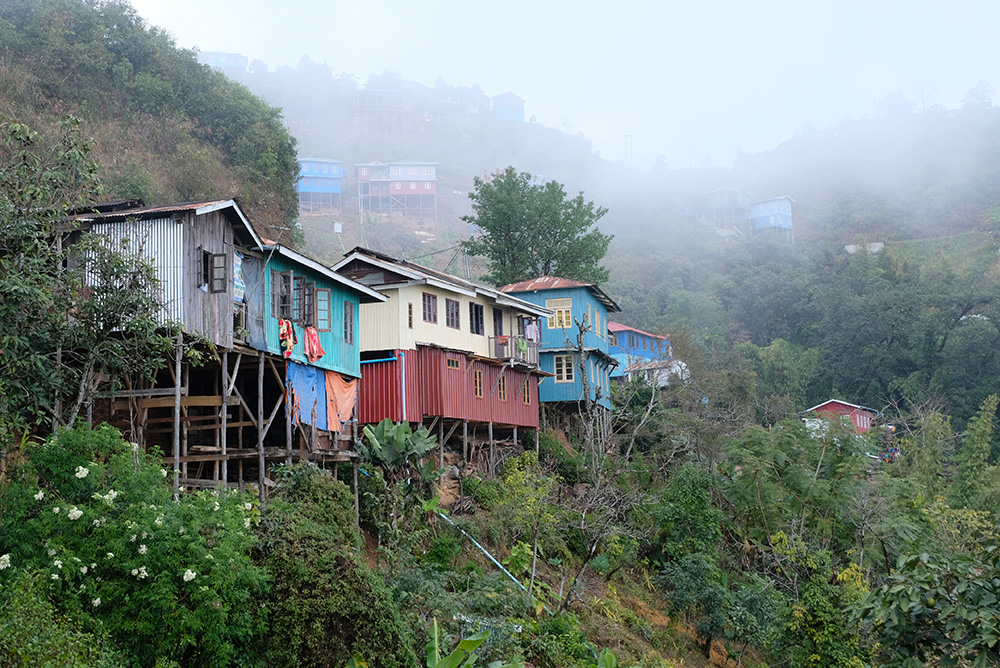
Falam is a typical example of remotest ethnic Myanmar with an unstable electricity supply, minimal modern construction, basic infrastructure and strong cultural and religious values. And these are just some of the factors which make it such a special place to visit. The hilly streets and incredible mountain views in every direction are unforgettable. Hakha is the capital of Chin State located about four hours south of Falam. The cold, often foggy weather and conifer trees and cherry blossom in the winter make it feel like these towns are in a different country altogether.
Tedim and Rih Lake
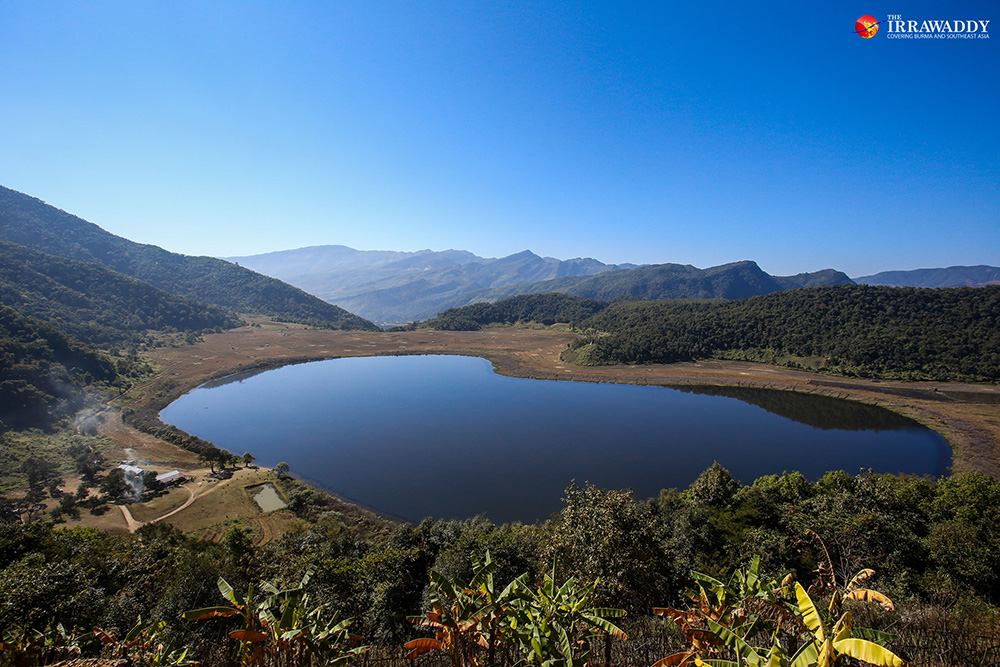
Tedim in northern Chin State is a small Christian town set around a peak among the beautiful blue Chin mountains. There’s not much to do in the town apart from admiring the view. Hiking to Kennedy Peak, Chin State’s second highest mountain located 90 minutes from Tedim, is not too taxing and worth it for the views. Nearby, Siansawn is a unique village on a neighboring hillside where the people have created their own religious sect and marriages are arranged by the village leader. Rih Lake is a famous heart-shaped lake four hours’ drive from Tedim and close to the Indian border.
Eastern Myanmar
Loikaw
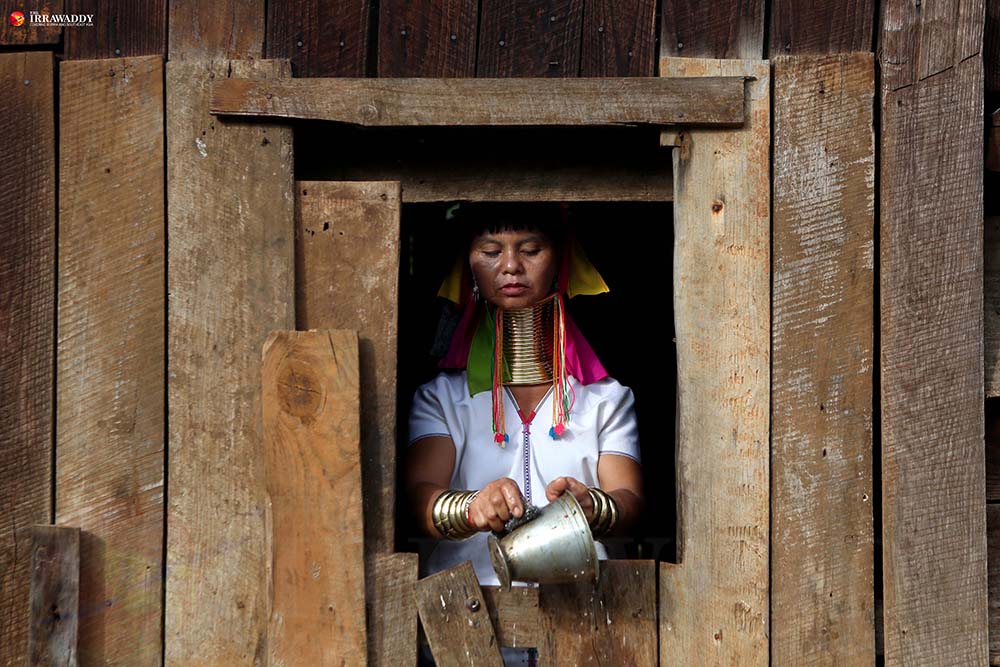
Loikaw, the capital of Kayah, Myanmar’s smallest state, is an up-and-coming destination for travelers in Myanmar. Most visitors use the town as a base for visiting or trekking to outlying villages to see the distinctive, myth-filled Kayan culture in which some of the women wear brass coils on their necks. Major efforts to establish community-based tourism have been taking place in the area and immersive travel programs have been developed to avoid the potential for “human zoos” to emerge as they have elsewhere.
Inle Lake
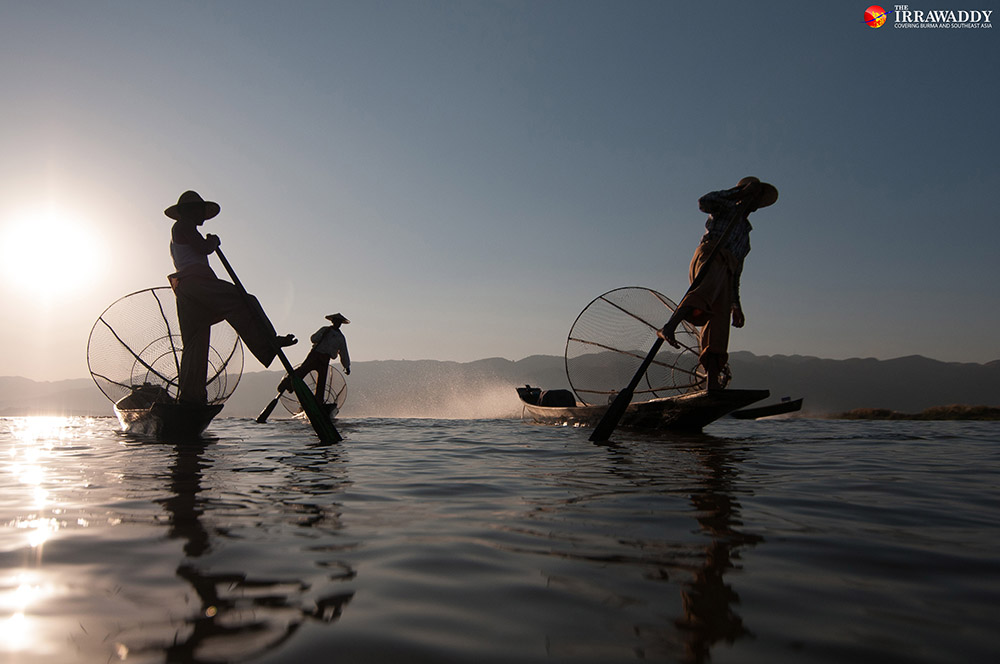
Fishermen row small boats by leg on the still waters of a lake sitting 900 meters above sea level. Mountains surround the water where diverse ethnic subgroups live and earn a livelihood from the lake. As one of Myanmar’s most popular destinations, it’s easy to get there and has a huge range of accommodation options from budget to blow-out. What’s not to love about Inle Lake?
Taunggyi
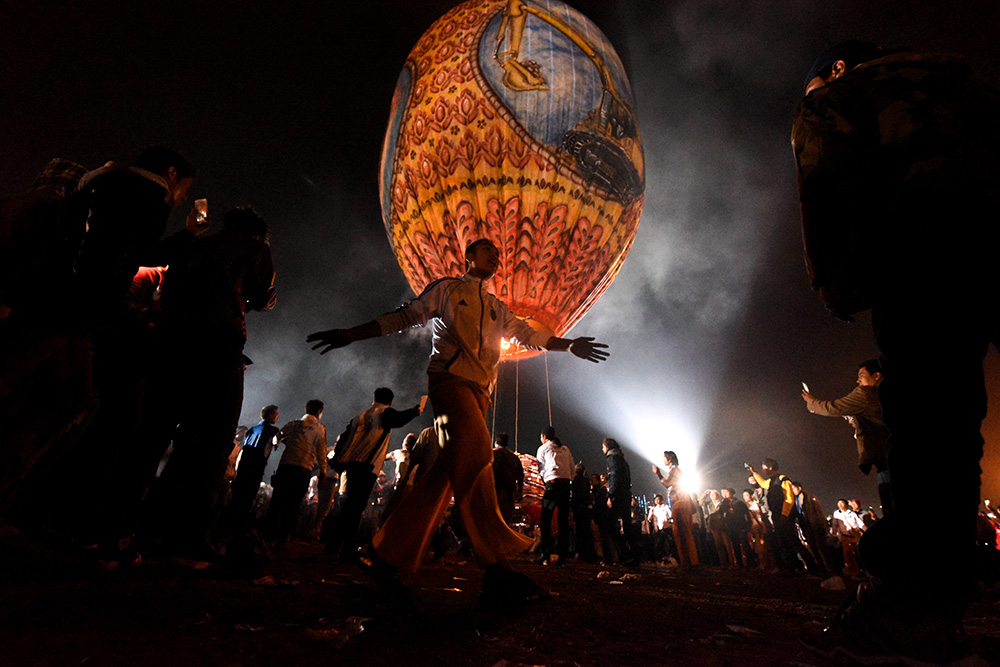
This Shan capital sits atop a mountain and is a vibrant, thriving center of commerce. In the market you’ll see members of different ethnic groups peddling the freshest, juiciest of produce grown in the surrounding fertile Shan Hills. Aythaya Vineyard is a must-visit around sunset. The town comes alive in the week before the November full moon when it hosts Myanmar’s most spectacular cultural event, the Tazaungdaing fire balloon festival.
Kalaw
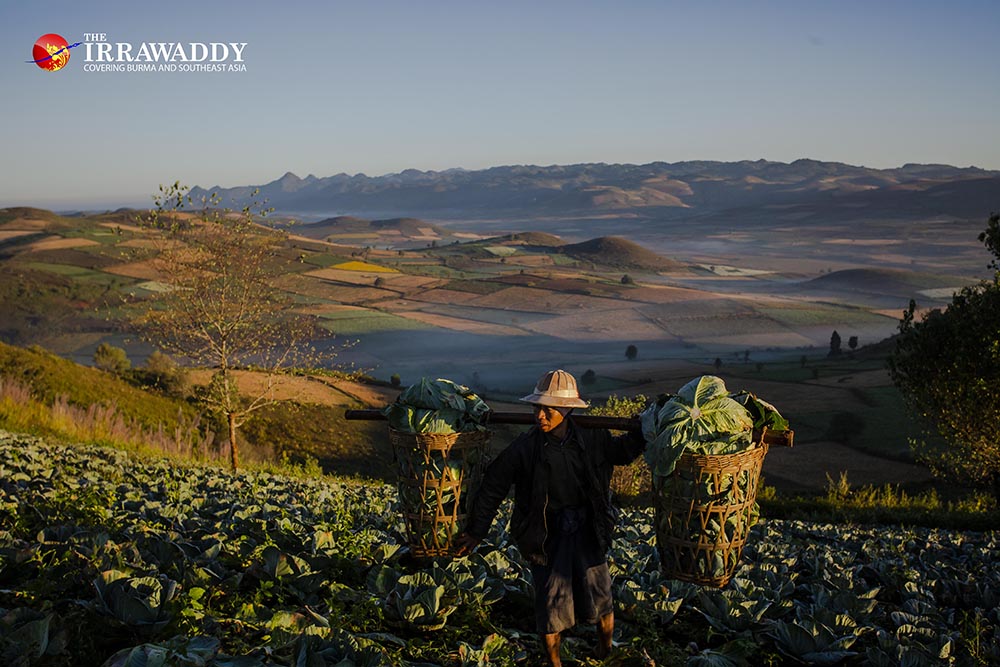
The cool climate makes this former colonial hill station feel like it’s in a different country. Kalaw sits in a picturesque valley with green hills, colorful gardens and pine trees everywhere you look. As many travelers stop here before setting out on their trek to Inle Lake, the town is well connected, has lots of accommodation options and great restaurants and cafes, though the best Shan noodles and hin htote dumplings to be found are at the tiny shops inside the central market. Green Hill Valley Elephant Camp and Ride Behind Kalaw now offer plenty of activities to keep you in Kalaw for a few days.
Pindaya
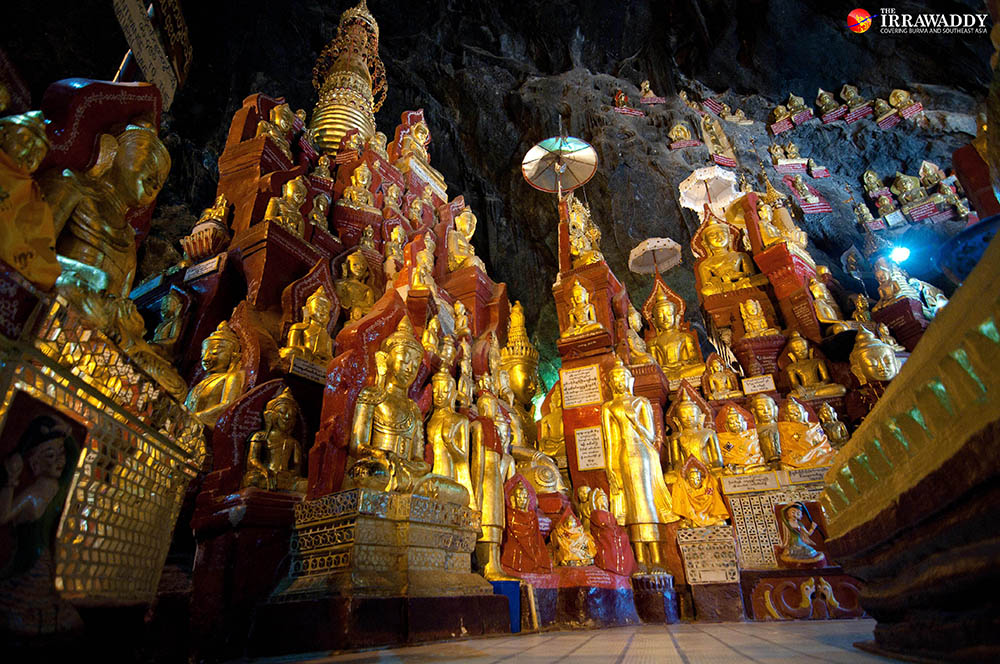
Most visitors to Pindaya come to visit the famous natural cave at Shwe Oo Min Pagoda that has been filled to the brim with over 6,000 Buddha images of all shapes, sizes and designs. The pagoda sits on a hillside and there are fantastic views of the surrounding, colorful Shan farmland. A wander around the area may lead you to the lake or an old teak monastery and if you’re lucky you may see people from the Pa-O, Danu and Taungyo ethnic subgroups who live in the area.
Ywangan
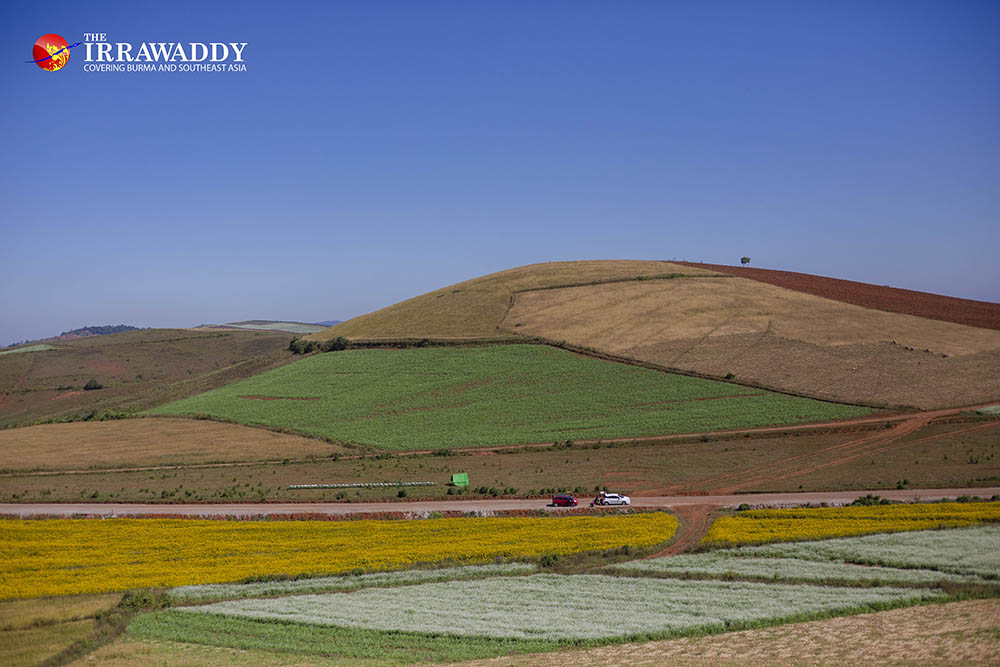
Ywangan, 90 minutes north of Pindaya and two hours north of Kalaw, is famous for its coffee plantations which produce some of the highest quality of coffee grown in Myanmar. Another special feature is the unusual blue lake which, though small in size, is surrounded by lots of local legends and superstitions and is so clear you can see the black fish darting around the bottom. Alawe Chaung Waterfall is another nice place in Ywangan to spend some time relaxing.
Hsipaw

Hsipaw is a wonderful northern Shan town with great trekking opportunities, waterfalls large and small to swim and chill at and possibly the best noodle dishes in Myanmar. For much of the year, the surrounding farmland is bursting with sweetcorn and other agricultural crops. The home of the last Shan prince, known as the Shan Palace is open for a few hours per day and a descendant of the family invites people into the home to tell the family story.
Kyaingtong
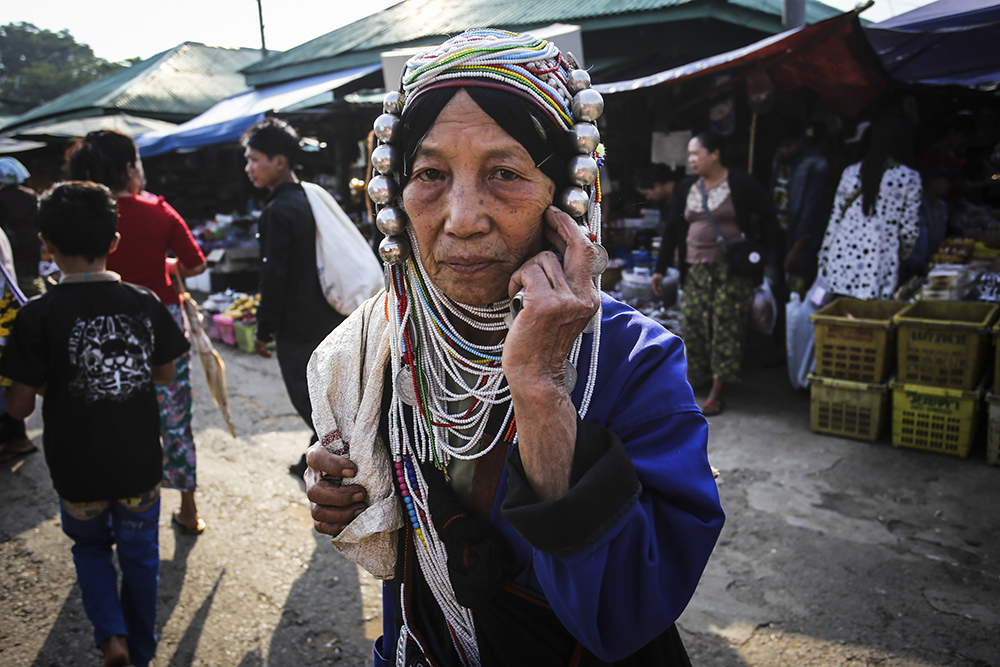
Sometimes spelled Keng Tung, this is a major hub in the east of Shan State where there are Chinese and Thai influences and ethnic subgroups like the Wa, Akha, Ann and Lahu live nearby. Trekking to tribal villages nearby can be arranged and a walk through the morning market is a vibrant and colorful experience where you can see many kinds of traditional outfits.
Northern Myanmar
Katha
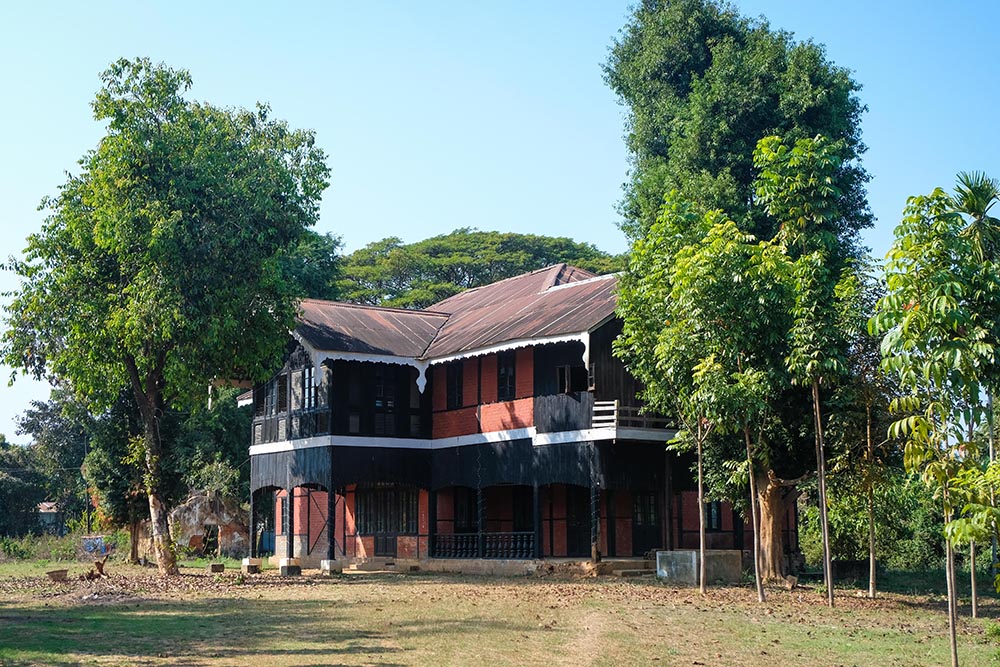
Katha is a small, sleepy town famous for being the setting of George Orwell’s novel Burmese Days. Orwell was stationed as a police officer here in the 1840s and the locations featured in the story—including the British Club and Orwell’s house—can be visited today. Local Orwell enthusiasts have managed to save the former Commissioner’s House from demolition and have simple visual exhibits connected to Orwell and the history of the town.
Indawgyi Lake
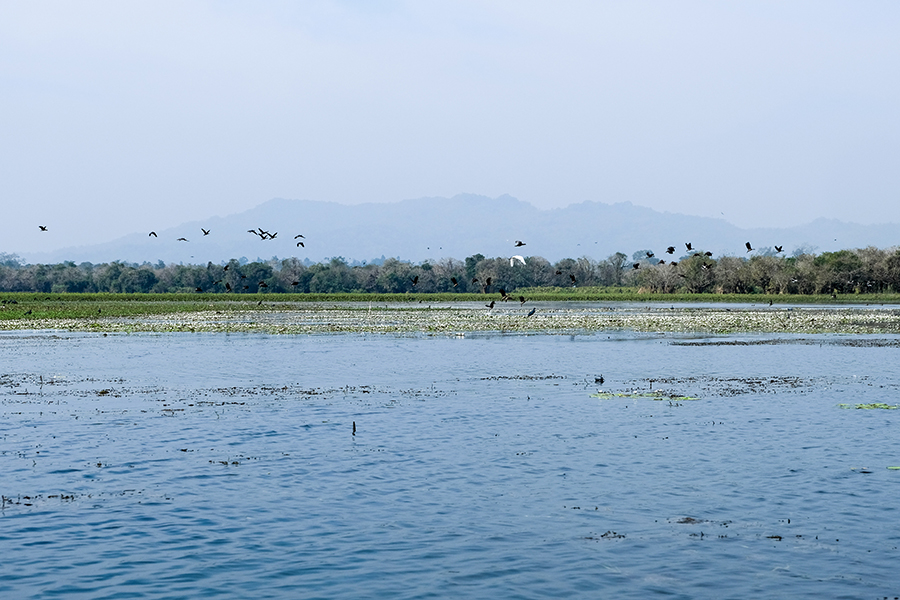
Indawgyi Lake Wildlife Park is an official UNESCO Biosphere Reserve which is special for its rich population of wildlife and water birds, many of which are endemic or endangered species. Visitors usually base themselves at Lon Ton on the southwestern shore of Indawgyi Lake and can take boat rides over the the famous “floating” Shwemyitzu Pagoda, kayak on the water and learn about the Shan-ni culture. Trekking with a local guide in the surrounding hills is an educational and rewarding experience.
Myitkyina
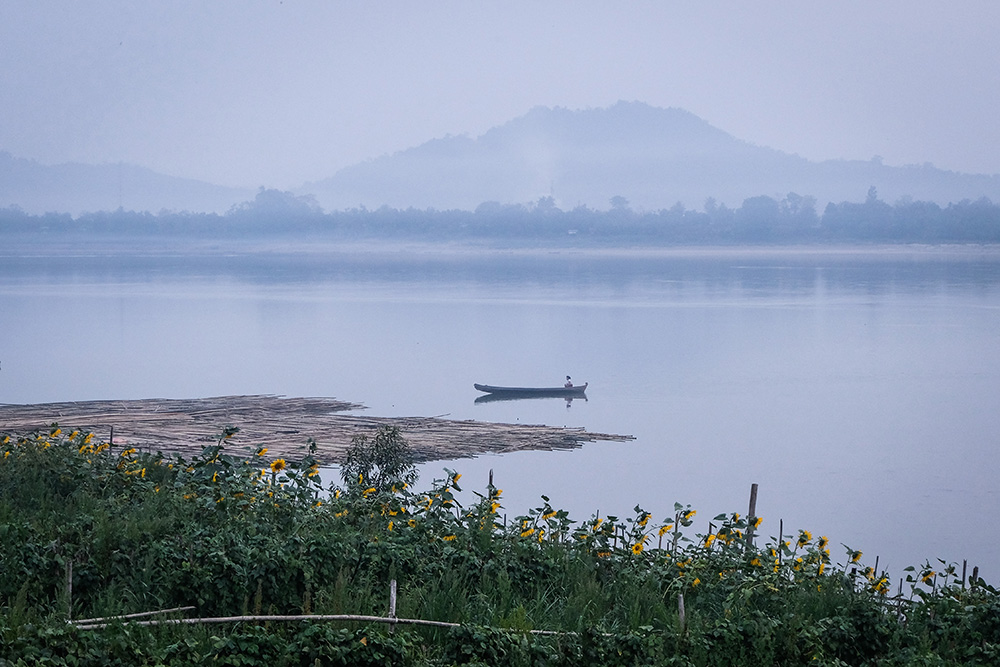
This Kachin capital is a city unlike any other in Myanmar. As well as people from the Kachin ethnic group, you’ll see Chinese influence and a multitude of other ethnic subgroups and religions as evidenced by the traditional outfits the range of places of worship you’ll see on a walk around the city or at the central market. Myitsone, the point where two rivers converge to form the important Irrawaddy River, is a one-hour drive north of the city. This confluence has also been the subject of nationwide protests against a proposed China-backed hydropower dam. At sundown, go to a riverside restaurant and try the herby Kachin dishes teamed with the local liquor, sepi.
Putao
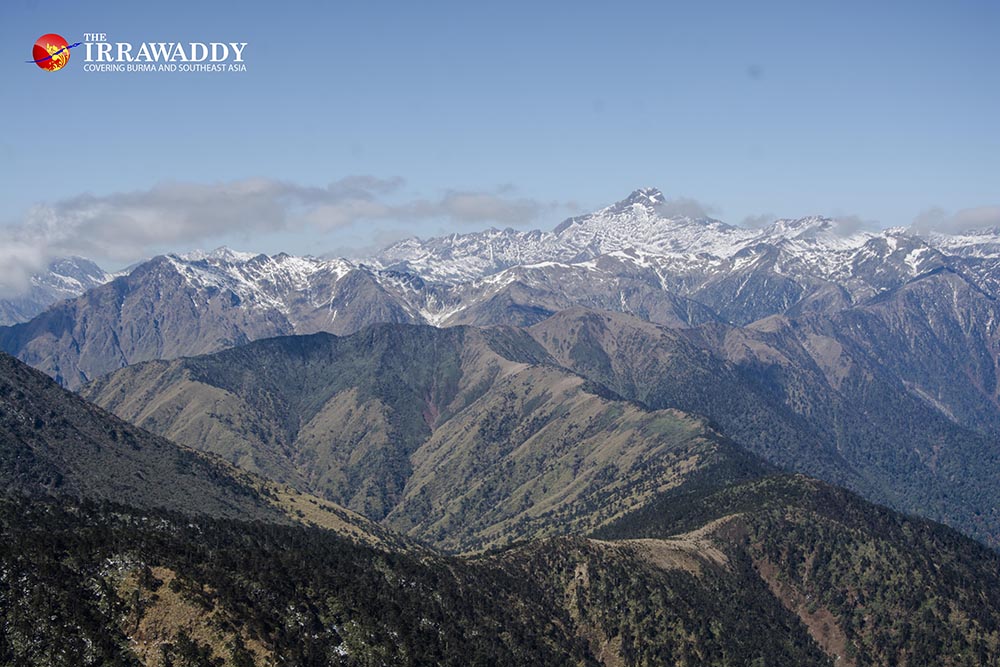
Putao, the northernmost town of Myanmar, is surrounded by the snowy mountains of the eastern Himalayas and can only be accessed by flight from Myitkyina. It is home to the the Lisu and Rawang ethnic subgroups. The little-visited town is the closest urban center to Myanmar’s—and Southeast Asia’s—highest mountain, the unconquerable Hkakabo Razi. Foreigners are required to have a permit to go outside the town where there are opportunities for whitewater rafting, long-distance trekking and even mountaineering.

















